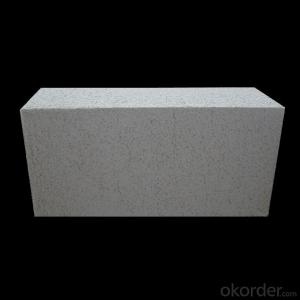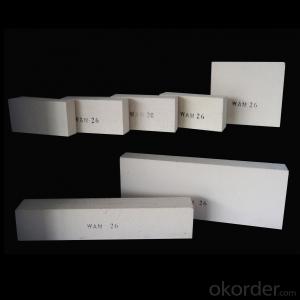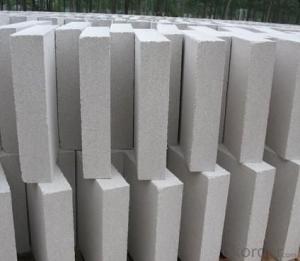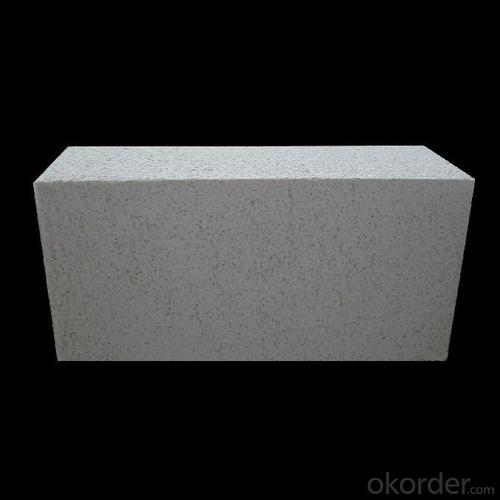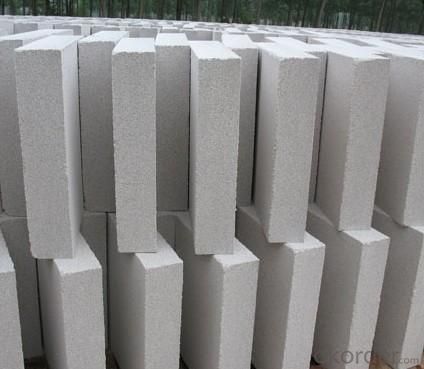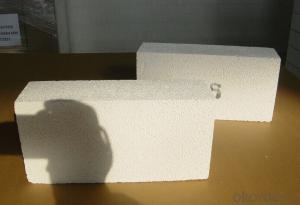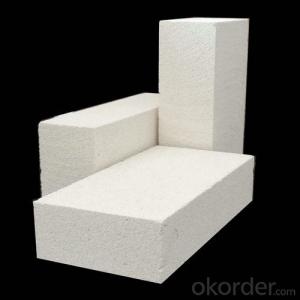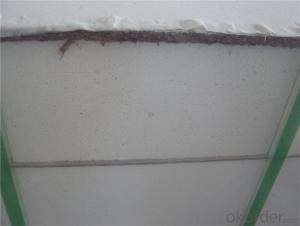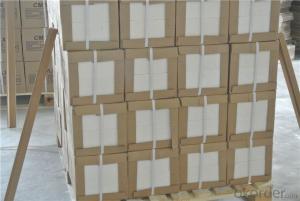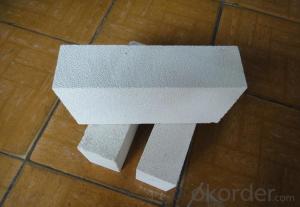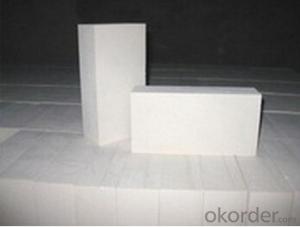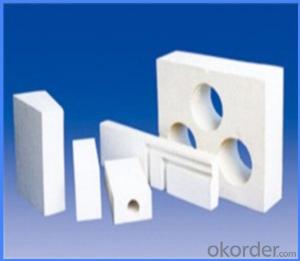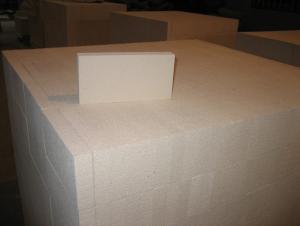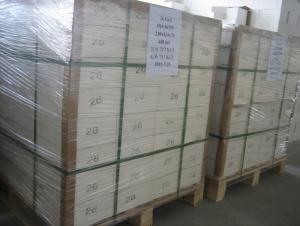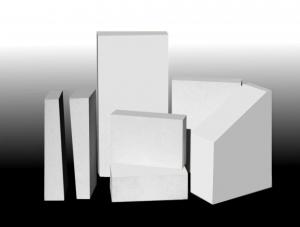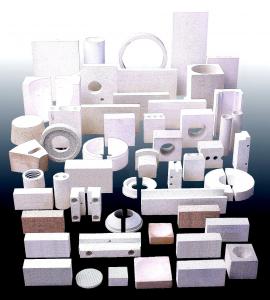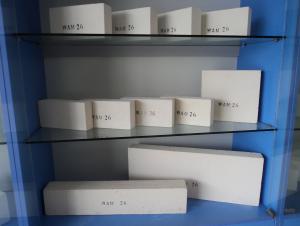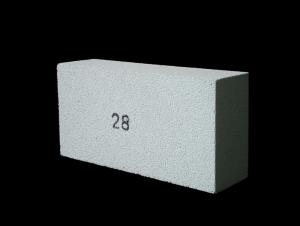Insulating Fire Brick - Refractory Mullite Insulating Refractory Brick JM 42
- Loading Port:
- Shanghai
- Payment Terms:
- TT OR LC
- Min Order Qty:
- 20 m.t.
- Supply Capability:
- 20 m.t./month
OKorder Service Pledge
OKorder Financial Service
You Might Also Like
General Information
CMAX insulating firebricks are classified under temperature between 1300℃ to 1700℃, manufactured from high purity alumina clay.
1. Lower content of iron, alkaline and impurities, good high temperature properties.
2. Homogeneous structure, light weight, energy saving because lower heat storage in the furnace during cooling cycles.
3. High strength, good thermal shock resistance under high temperature.
Feature
Light weight and low thermal conductivity
Low heat storage
Low iron and impurities
Application of Insulating brick
Metallurgical Industry: blast furnace, hot blast furnace, heating furnace, etc..
Petrochemical Industry: ethylene cracking furnace, hydrogen furnace, the main furnace, heating furnace, etc..
Ceramic industry: roller kiln, kiln, etc..
Advantages of heat insulation brick
Low thermal conductivity: many air holes will bring good thermal insulation effect, energy saving.
High crushing strength: high crushing strength, volume stability.
Low heat storage: small heat storage, absorb more heat, energy-saving effect is obvious.
Technical Data
ITEM | GJM30 | GJM28 | GJM26 | GJM23 |
Classification Temperature, ℉/℃ | 3000/1650 | 2800/1540 | 2600/1430 | 2300/1260 |
Bulk Density,g/cm³ | ≤1.0 | ≤0.9 | ≤0.8 | ≥0.5 |
Reheating Linear Change, % | ≤0.9 (1550℃,12 h) | ≤0.8 (1510℃,12 h) | ≤0.7 (1410℃,12 h) | ≤0.5 (1230℃,12 h) |
Al2O3 Content, % | ≥75 | ≥65 | ≥55 | ≥45 |
Fe2O3 Content, % | ≤0.5 | ≤0.6 | ≤0.7 | ≤1.0 |
Thermal Conductivity: | ||||
800℃, w/m.k | ≤0.39 | ≤0.37 | ≤0.35 | ≤0.18 |
1000℃, w/m.k | ≤0.43 | ≤0.41 | ≤0.39 | ≤0.20 |
1200℃, w/m.k | ≤0.48 | ≤0.46 | ≤0.43 | --- |
Insulating brick
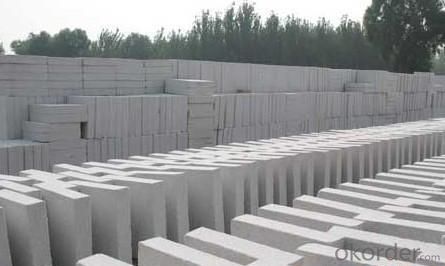
- Q: Do insulating fire bricks require a curing period before use?
- Yes, insulating fire bricks typically require a curing period before use. This is because during the manufacturing process, these bricks are exposed to high temperatures which can cause the release of moisture and volatile compounds. Curing involves slowly heating the bricks to gradually remove any remaining moisture and volatile substances. This process helps to ensure that the bricks are fully dried and stabilized before they are subjected to the intense heat of a fire. The curing period can vary depending on the type and thickness of the bricks, but it generally involves gradually increasing the temperature over several days or weeks. Failure to properly cure insulating fire bricks can lead to cracking, spalling, and reduced thermal efficiency. Therefore, it is important to follow the manufacturer's recommendations and allow for an appropriate curing period before using these bricks in high-temperature applications.
- Q: Are insulating fire bricks suitable for use in cement plants?
- Yes, insulating fire bricks are suitable for use in cement plants. Insulating fire bricks are made from lightweight refractory materials that are designed to resist high temperatures and thermal shock. These bricks have low thermal conductivity, which means they can effectively insulate against heat transfer. In cement plants, where high temperatures are generated during the production process, insulating fire bricks can be used in various applications. They can be used to line the kiln, where the raw materials are heated to extreme temperatures to produce cement clinker. The insulating properties of these bricks help to reduce heat loss and improve energy efficiency in the kiln. Additionally, insulating fire bricks can be used to line the preheater tower and other high-temperature areas in the cement plant. These bricks provide insulation and protection against the intense heat, helping to prolong the lifespan of the equipment and reduce maintenance costs. Furthermore, the lightweight nature of insulating fire bricks makes them easier to handle and install compared to traditional refractory bricks. This can save time and labor during the construction or repair of cement plant equipment. Overall, insulating fire bricks are a suitable choice for use in cement plants due to their high-temperature resistance, low thermal conductivity, and ease of installation. They can contribute to improved energy efficiency, equipment durability, and cost savings in cement plant operations.
- Q: Can insulating fire bricks be used in the construction of pottery molds?
- Insulating fire bricks are indeed applicable for the construction of pottery molds. Crafted from lightweight refractory materials, these bricks possess exceptional heat insulation qualities. Specifically engineered for high-temperature applications like pottery kilns, they offer a range of benefits. When constructing pottery molds, it is imperative to utilize materials that can endure the kiln's intense heat. Insulating fire bricks can withstand temperatures of up to 3000°F (1650°C), rendering them ideal for pottery mold construction. They provide insulation to prevent heat dissipation and maintain consistent temperatures within the kiln, crucial for achieving the desired firing results. Moreover, insulating fire bricks can be conveniently shaped and cut to suit the designated mold design. Their lightweight nature also simplifies handling during the mold construction process. Additionally, the insulating properties of these bricks curtail energy consumption by preventing excessive heat loss, making them a cost-effective choice in the long term. All in all, insulating fire bricks prove to be a fitting option for constructing pottery molds due to their capacity to withstand high temperatures, offer insulation, and be easily molded to meet specific design requirements.
- Q: Is it possible to recycle used insulating fire bricks?
- Yes, it is possible to recycle used insulating fire bricks. Insulating fire bricks are made from various materials, such as alumina, silica, and other refractory materials. These materials can be broken down and reused in the production of new bricks or other refractory products. Recycling used insulating fire bricks can help reduce the demand for new raw materials and minimize waste. However, it is important to note that not all recycling centers or facilities may accept insulating fire bricks, so it is advisable to check with local recycling programs or specialized recycling companies that deal with refractory materials.
- Q: Can insulating fire bricks be used in the construction of ceramic tile kilns?
- Insulating fire bricks are suitable for constructing ceramic tile kilns. These bricks are specially designed to endure elevated temperatures and possess exceptional insulation properties. By having low thermal conductivity, they effectively trap heat inside the kiln, preventing its escape and enhancing the firing process of ceramic tiles. Moreover, their lightweight quality makes them convenient to handle and install within the kiln structure. Ultimately, incorporating insulating fire bricks in the construction of ceramic tile kilns enhances energy efficiency, diminishes heat loss, and guarantees consistent and regulated firing temperatures.
- Q: Do insulating fire bricks require any maintenance?
- Yes, insulating fire bricks typically require minimal maintenance. They are designed to be durable and withstand high temperatures, so they generally do not need any special care or regular maintenance. However, it is important to inspect them periodically for any signs of damage or wear and tear, and if any issues are identified, they should be repaired or replaced to ensure their effective insulation properties.
- Q: Are insulating fire bricks suitable for use in the construction of smelters?
- Yes, insulating fire bricks are suitable for use in the construction of smelters. These bricks are designed to withstand high temperatures and provide excellent insulation properties, making them ideal for lining the walls and floors of smelters. They help to retain heat, reduce energy loss, and protect the structure from extreme heat. Additionally, insulating fire bricks are lightweight and easy to install, making them a preferred choice for smelter construction.
- Q: Do insulating fire bricks have a high compressive strength?
- Yes, insulating fire bricks typically have a high compressive strength. These bricks are made from special refractory materials that are designed to withstand high temperatures and mechanical stress. As a result, they have excellent compressive strength, allowing them to bear heavy loads without cracking or breaking. The high compressive strength of insulating fire bricks makes them ideal for applications where structural integrity is crucial, such as in furnaces, kilns, and other high-temperature industrial equipment.
- Q: Do insulating fire bricks have a high resistance to creep?
- Insulating fire bricks possess a notable resistance to creep, indicating their ability to resist deformation over time when subjected to a consistent load or stress. Their design enables them to endure high temperatures and retain their form and integrity despite prolonged exposure to heat. These bricks are composed of lightweight refractory materials like clay, which exhibit low thermal conductivity and exceptional resistance to thermal shock. The amalgamation of these characteristics empowers insulating fire bricks to withstand creep and uphold their structural stability, even in the most challenging and extreme circumstances.
- Q: Can insulating fire bricks be used in rotary kilns?
- Rotary kilns can indeed utilize insulating fire bricks. These bricks are specifically designed to possess low thermal conductivity, enabling them to withstand high temperatures while minimizing heat loss. Consequently, they are well-suited for employment in rotary kilns, which are utilized across various industries for processes like calcination, sintering, and roasting. The application of insulating fire bricks within rotary kilns effectively contains the internally generated heat, resulting in enhanced energy efficiency and cost savings. Moreover, these bricks' insulating properties aid in reducing the temperature on the kiln's outer surface, thereby ensuring a safer working environment for operators. Ultimately, insulating fire bricks serve as an ideal choice for rotary kilns, offering remarkable thermal insulation and contributing to the kiln's overall performance and durability.
Send your message to us
Insulating Fire Brick - Refractory Mullite Insulating Refractory Brick JM 42
- Loading Port:
- Shanghai
- Payment Terms:
- TT OR LC
- Min Order Qty:
- 20 m.t.
- Supply Capability:
- 20 m.t./month
OKorder Service Pledge
OKorder Financial Service
Similar products
Hot products
Hot Searches
Related keywords
